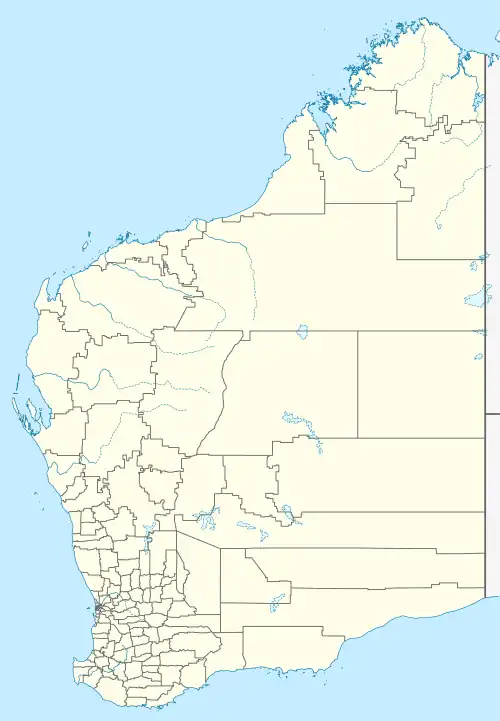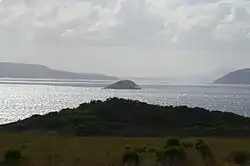

Seal Island in the Great Southern region[1] of Western Australia (located at 35°4′31″S 117°58′29″E / 35.07528°S 117.97472°E) is approximately 8.5 kilometres (5 mi) south-east of Albany and approximately 3 kilometres (2 mi) offshore from Frenchman Bay in King George Sound. It has a total area of 2.8 hectares (7 acres). The island is designated as a nature reserve (Reserve Number 32199).[2]
The island is composed entirely of granite and is only accessible at the western end.[3]
History
George Vancouver named Seal Island in 1791 along with Breaksea Island, Michaelmas Island and other features around King George Sound.[4]
Matthew Flinders landed on Seal Island during the voyage of the Investigator in 1801, searching for items that were reportedly left by Vancouver[5] and leaving behind a bottle containing a parchment with details of their own arrival and departure.[6]
HMAS Perth was scuttled behind Seal Island in 2001, and is now one of Western Australia's premier dive sites.[7]
References
- 1 2 There are 5 islands in Western Australia named "Seal Island" – see Seal Island for more information.
- ↑ "South Coast Regional Management Plan 1992-2002" (PDF). 2002. Retrieved 17 April 2008.
- ↑ Fornasiero, F. J.; Monteath, Peter; West-Sooby, John (2007). Encountering Terra Australis: The Australian Voyages of Nicolas Baudin and Matthew Flinders. ISBN 9781862546257. Retrieved 17 April 2008.
- ↑ "SMH Travel - Albany". The Sydney Morning Herald. 2004. Retrieved 17 April 2008.
- ↑ Estensen, Miriam (2004). The Life of Matthew Flinders. ISBN 9781741141528. Retrieved 17 April 2008.
- ↑ "The History of Australian Exploration Chapter XVI". 2007. Retrieved 17 April 2008.
- ↑ "Albany - The Wild South West". 2007. Retrieved 17 April 2008.